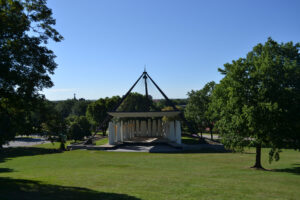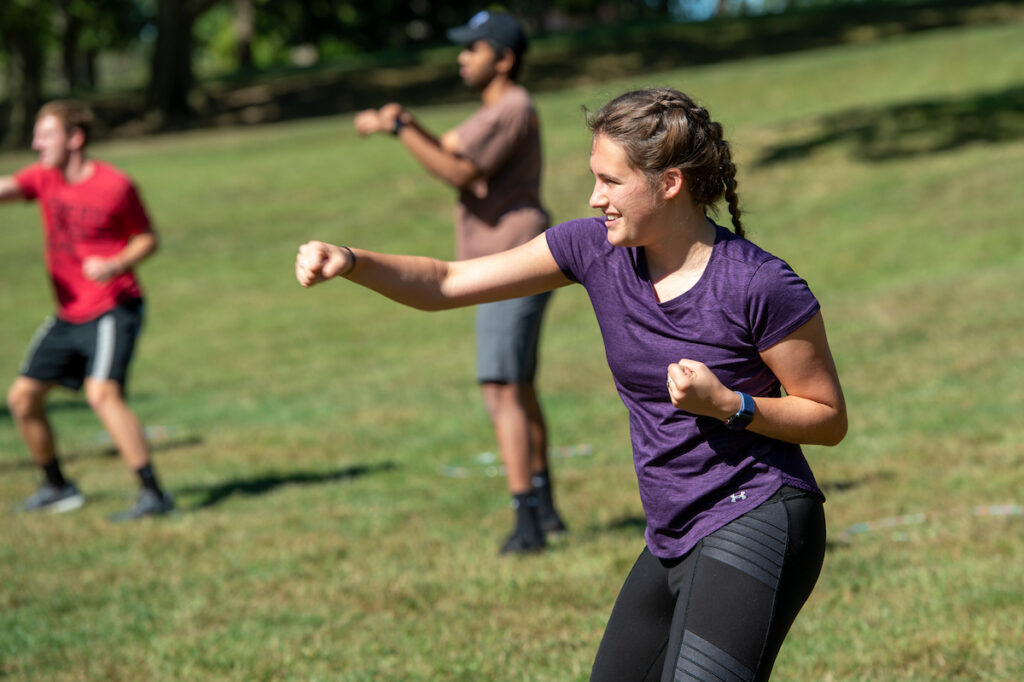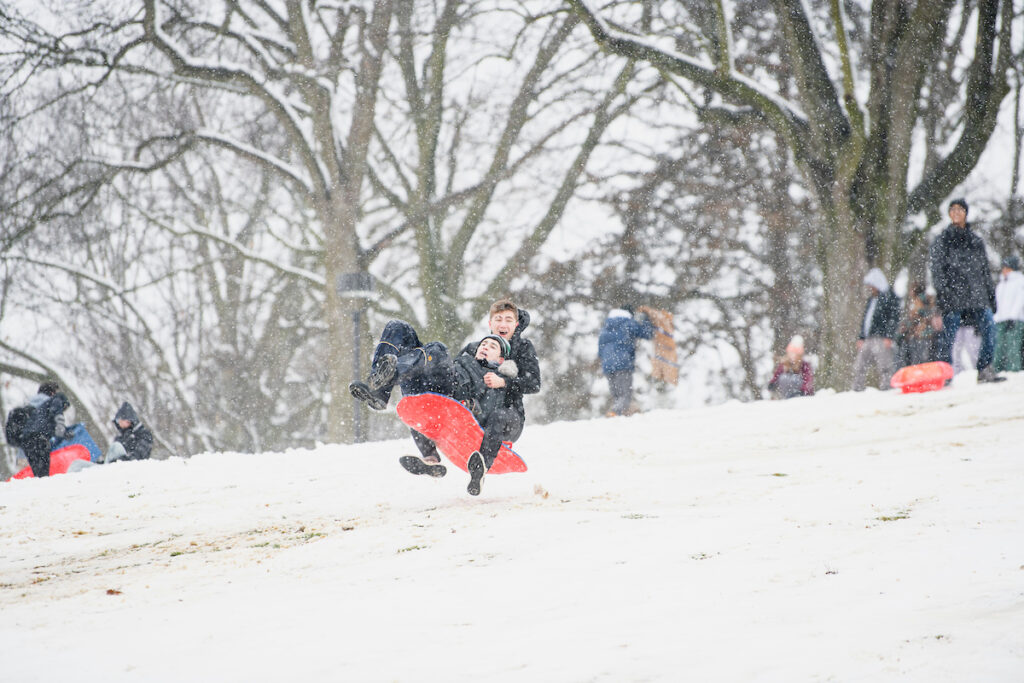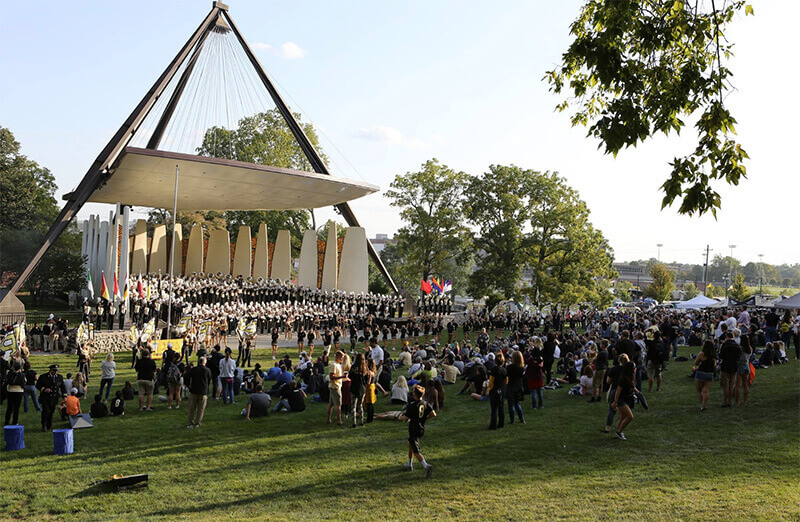
Slayter Center is an outdoor amphitheater with striking architecture. In spring, summer and fall, Slayter serves as a fresh-air venue for musical events, dances and lawn movies.
Seating is first come, first serve on the grassy knoll surrounding the stage. The gently sloping hill, combined with a lawn chair or blanket, makes for delightfully relaxed entertainment viewing.
Fresh-air entertainment
Seats: 20,000 on gently sloping hillside
Stage: 56' front, 34' back x 46' deep
Opened in 1963
Located at Stadium Avenue and Martin C. Jischke Drive
History
In 1963, Dr. Games and Marie Slayter donated $300,000 to Purdue University for the construction of Slayter Center for the Performing Arts. A 1921 Purdue graduate in chemical engineering, Dr. Slayter was former president of research and development at Owens-Corning and most noted for inventing fiberglass.
Dr. Slayter held more than 164 patents and served as a consultant on industrial applications for NASA. While at Purdue, Dr. Slayter played tuba in the University Bands. Slayter Center was constructed at the foot of what was then called Dukes Hill, which provided a natural amphitheater.
Designed to reflect Stonehenge with superb sound
Architect Joseph Baker conceived Slayter Center in the concept of Stonehenge in Wiltshire, England. The side and back walls of the stage are formed of stelae similar to the stone monoliths that comprise Stonehenge. The spaces between the stelae are filled with broken rough blocks of yellow French glass and black epoxy-resin.
The stelae are formed in poly-cylindrical, concave-convex shapes for proper sound diffusion. The "concrete cloud" design of the ceiling is comprised of alternating concave and convex poly-undulant sections and is completely suspended from above by stainless steel cables from the self-oxidizing steel tripod.
To maintain an outdoor feel to the structure, the ceiling of Slayter Center does not touch the sides of its stage. The amphitheatre's "flaring horn" design compresses the sound and projects it out to the audience, rather than merely reflecting the sound. The stage can seat a 110-piece symphony band or orchestra.




